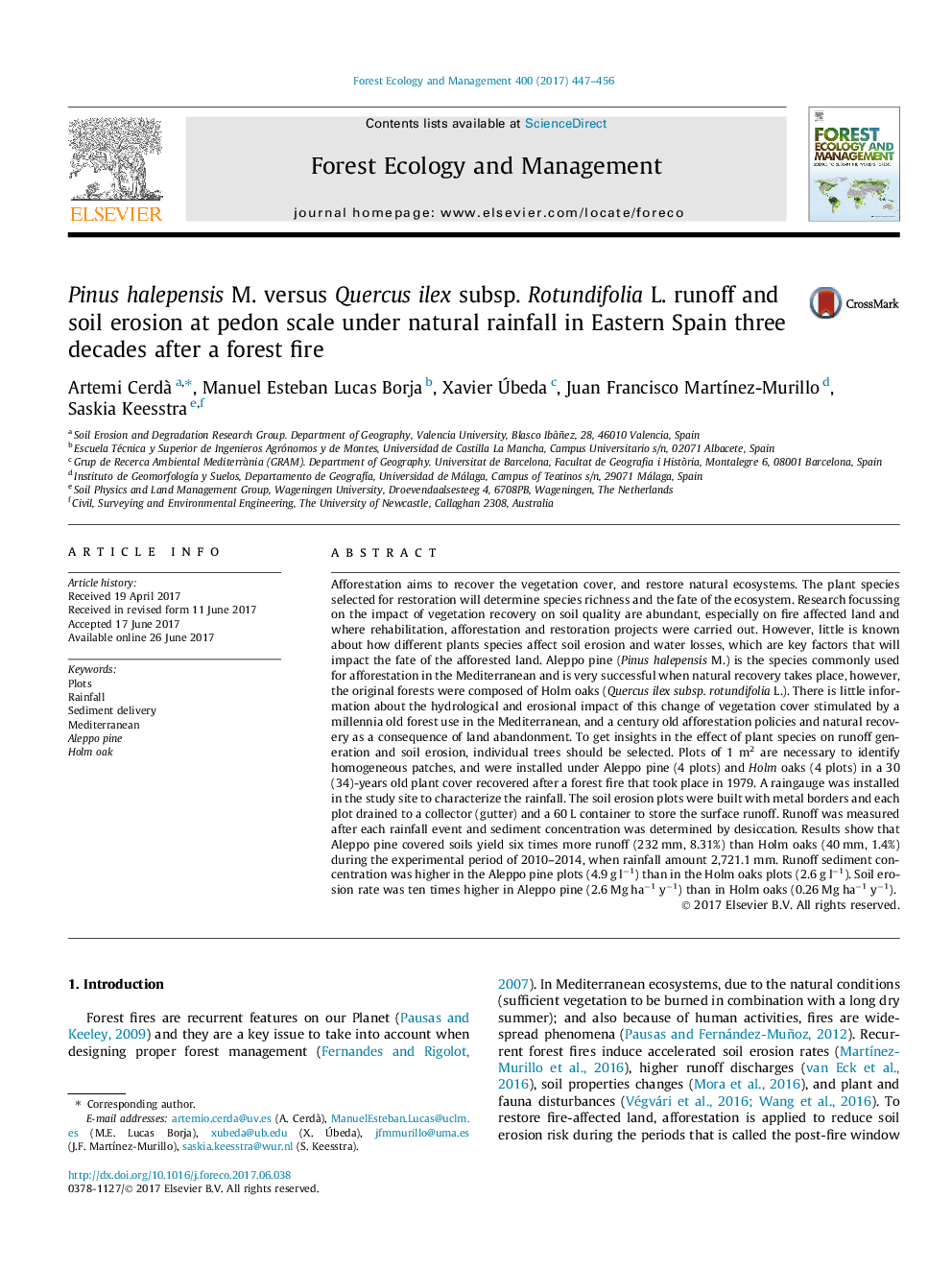| Article ID | Journal | Published Year | Pages | File Type |
|---|---|---|---|---|
| 6459279 | Forest Ecology and Management | 2017 | 10 Pages |
â¢Four paired 1 m2 plots on Aleppo pine and Holm oak were monitored from 2010 till 2014.â¢Total rainfall was 2721 mm and 4 events were larger than 100 mm.â¢Aleppo pine covered soils yield six times more runoff than Holm oak.â¢Sediment concentration was 4.9 g lâ1 in Aleppo pine and 2.6 g lâ1 in Holm oak.â¢Soil erosion rate was ten times higher in Aleppo pine than in Holm oak.
Afforestation aims to recover the vegetation cover, and restore natural ecosystems. The plant species selected for restoration will determine species richness and the fate of the ecosystem. Research focussing on the impact of vegetation recovery on soil quality are abundant, especially on fire affected land and where rehabilitation, afforestation and restoration projects were carried out. However, little is known about how different plants species affect soil erosion and water losses, which are key factors that will impact the fate of the afforested land. Aleppo pine (Pinus halepensis M.) is the species commonly used for afforestation in the Mediterranean and is very successful when natural recovery takes place, however, the original forests were composed of Holm oaks (Quercus ilex subsp. rotundifolia L.). There is little information about the hydrological and erosional impact of this change of vegetation cover stimulated by a millennia old forest use in the Mediterranean, and a century old afforestation policies and natural recovery as a consequence of land abandonment. To get insights in the effect of plant species on runoff generation and soil erosion, individual trees should be selected. Plots of 1 m2 are necessary to identify homogeneous patches, and were installed under Aleppo pine (4 plots) and Holm oaks (4 plots) in a 30(34)-years old plant cover recovered after a forest fire that took place in 1979. A raingauge was installed in the study site to characterize the rainfall. The soil erosion plots were built with metal borders and each plot drained to a collector (gutter) and a 60 L container to store the surface runoff. Runoff was measured after each rainfall event and sediment concentration was determined by desiccation. Results show that Aleppo pine covered soils yield six times more runoff (232 mm, 8.31%) than Holm oaks (40 mm, 1.4%) during the experimental period of 2010-2014, when rainfall amount 2,721.1 mm. Runoff sediment concentration was higher in the Aleppo pine plots (4.9 g lâ1) than in the Holm oaks plots (2.6 g lâ1). Soil erosion rate was ten times higher in Aleppo pine (2.6 Mg haâ1 yâ1) than in Holm oaks (0.26 Mg haâ1 yâ1).
